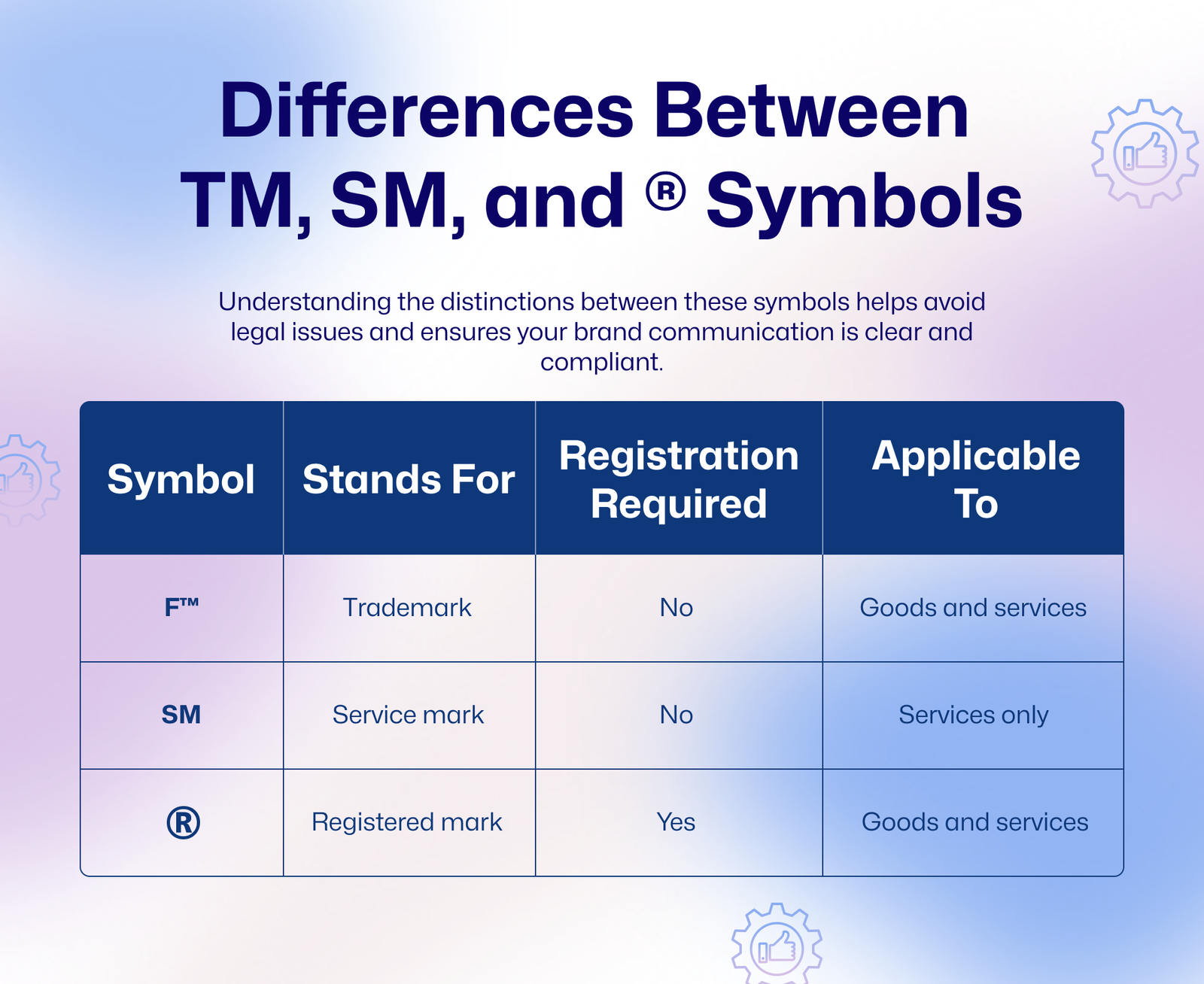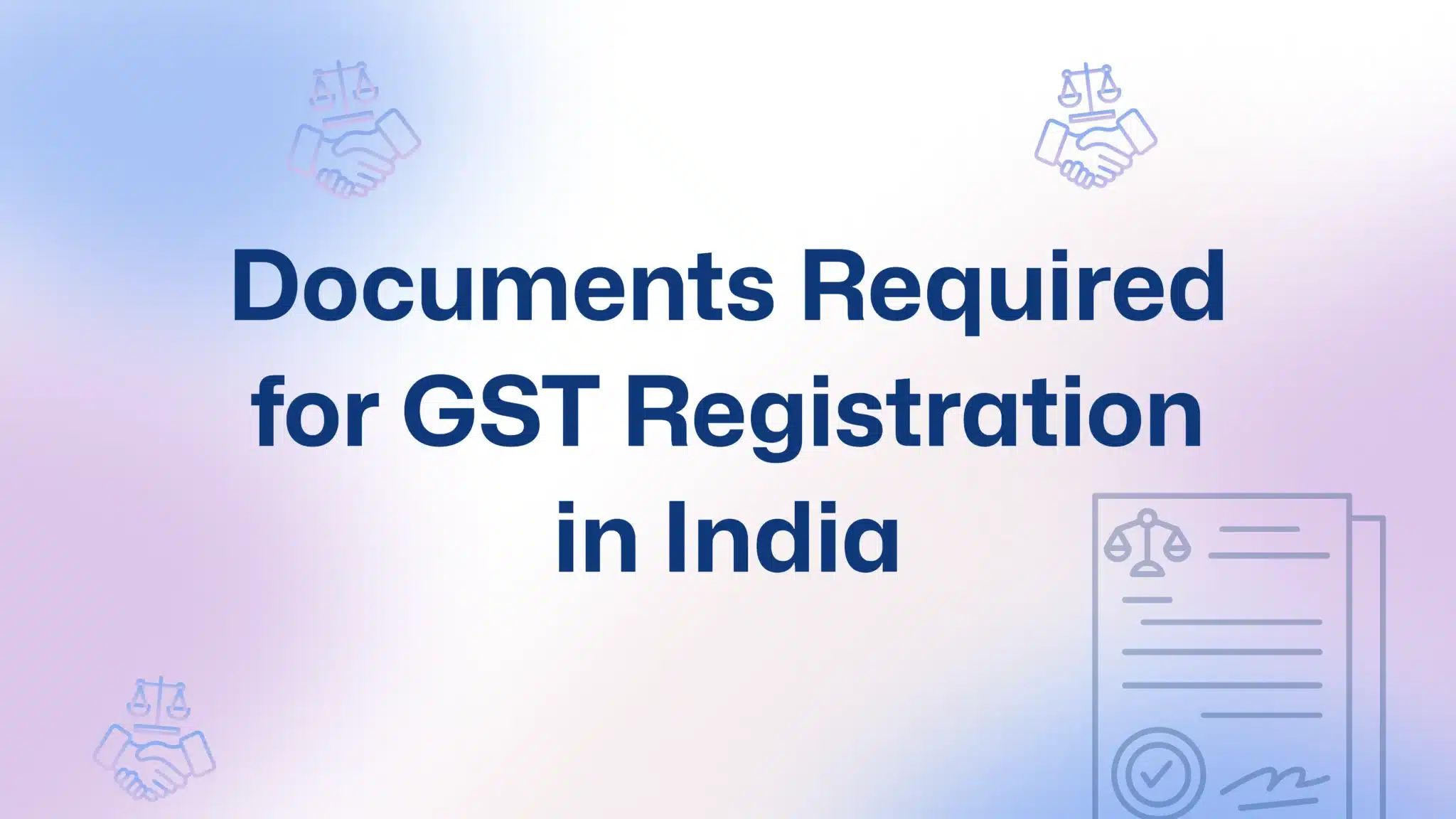Your brand is one of your most valuable business assets. It’s how customers recognise you, trust you, and choose your products or services. To maintain that trust and protect your identity from being copied or misused, trademarks play a crucial role. A trademark helps your product or service stand out and makes your brand easy to remember for all the right reasons.
In this blog, we explore what trademark symbols mean.
- Learn how to use each symbol the right way to avoid mistakes.
- Discover why using the correct trademark symbol matters to your brand.
- We’ll walk you through how to register a trademark in India.
- Whether you’re just starting or growing your business, understanding symbols like ™ , ℠ and ® (the reserved symbol) is crucial.
- Using these symbols helps you build a strong and legally protected brand identity.
And the best part? We help you with every step of the trademark registration Process, so you can focus on growing your business while we handle the legal side.
What is a Trademark?
A trademark is a symbol, word, phrase, design, or combination that identifies and distinguishes the source of goods or services. It serves as a badge of origin, helping consumers recognise and trust your brand. Think of famous logos like the Nike swoosh or the McDonald’s golden arches—these are powerful registered marks that represent specific companies and the quality they promise.
Importance of Trademark Registration
Trademark registration is not mandatory, but it is highly recommended for businesses seeking legal protection and exclusive rights. It safeguards your brand against imitation or misuse by competitors. Once your trademark is registered, you can legally enforce your rights and prevent others from using similar marks that may confuse customers. It also adds a professional edge to your business identity, making your brand appear more legitimate and trustworthy.
Understanding Trademark Symbols
There are three key symbols associated with trademarks: the ™ symbol, the ℠ symbol (for service marks), and the ® symbol. Let’s break down their meanings and uses.
The ™ Symbol (TM)
Meaning: The TM symbol stands for “trademark.”
Usage: It is used to indicate that a particular word, logo, or phrase is being claimed as a trademark. Importantly, you do not need to register your mark to use the TM symbol. It is often used when a trademark application is in process or when the business intends to register it in the future. The TM symbol provides a basic level of protection, signalling to others that the brand is claimed as a mark of trade.
Example: If you create a new product and brand it as “FreshGlow,” you can write it as “FreshGlow™” to indicate you are claiming trademark rights.
The ℠ Symbol (SM)
Meaning: The SM symbol represents a service mark.
Usage: Used similarly to the TM symbol, but specifically for services rather than products. It applies to businesses in industries like consulting, education, or software services.
Example: “BrightSolutions℠” could be a service mark for a consulting firm.
The ® Symbol (R)
Meaning: The R symbol, often referred to as the “registered mark,” indicates that a trademark has been officially registered with the appropriate government body, such as the Indian Trademark Office or the United States Patent and Trademark Office (USPTO).
Usage: The R symbol can only be used after successful registration. Unauthorised use of the ® symbol without proper registration can result in penalties. It conveys to the public that the trademark is legally protected.
Example: You can only use “FreshGlow®” once the trademark has been approved and registered.
Differences Between TM, SM, and ® Symbols
Understanding the distinctions between these symbols helps avoid legal issues and ensures your brand communication is clear and compliant.
Why Use Trademark Symbols?
Trademark symbols serve as public notices. They inform customers, competitors, and courts that a brand owner is asserting rights over a specific mark. These symbols also deter infringers from copying or misusing your brand assets.
- The R Symbol communicates that the mark is officially registered.
- Do Not Confuse with Copyright Symbol: The ® symbol is sometimes confused with the copyright symbol (©). However, copyright protects creative works like music or literature, while the ® symbol applies to trademarks.
- Use Responsibly: The ® symbol must be used correctly and only after successful registration.
Misuse of the R Symbol
Using the R symbol without a registered trademark is illegal. Businesses sometimes mistakenly add the R symbol to appear professional. However, if the mark is not registered, this can be deemed as misleading or deceptive. Penalties include fines, and it may affect future chances of getting the mark approved.
How to Register a Trademark in India
The trademark registration process in India involves a few steps. Here’s a breakdown:
1. Trademark Search
Begin with a comprehensive search to ensure your desired name or logo isn’t already in use. This avoids conflicts and potential rejections.
2. Choose the Appropriate Class
There are 45 trademark classes in India. Classes 1-34 are for goods, and 35-45 are for services. Choosing the correct class is crucial for effective protection.
3. File the Application
You can apply online through the official website of the Controller General of Patents, Designs, and Trademarks (CGPDTM). Include:
- Applicant details
- Trademark image or word
- Class of goods/services
- Date of first use (if any)
4. Examination and Objection
The examiner may raise objections based on similarity, descriptiveness, or lack of distinctiveness. You must respond within the stipulated timeline.
5. Publication in Trademark Journal
If the examiner approves, the mark is published in the Journal for public opposition. If no one objects within four months, the matter will proceed to the next stage.
6. Registration and Issuance of Certificate
After successful opposition or no objection, your trademark is registered, and a certificate is issued. You may now legally use the ® symbol.
Common Mistakes to Avoid
- Using ® Without Registration: Only use the registered mark symbol after receiving the certificate.
- Incorrect Placement: Always place the symbol at the top right corner of the mark.
- Inconsistent Use: Use the symbol consistently across packaging, website, advertisements, and contracts.
- Not Renewing: Trademark validity in India is for 10 years. Renew it before expiry to avoid cancellation.
Final Thoughts
Trademarks are essential for building a lasting brand. Understanding and correctly using trademark symbols like ™, ℠, and ® is vital for protecting your brand assets. Misuse of the R symbol, or using the R symbol without proper registration, can lead to legal issues and damage your brand’s credibility. Whether you’re launching a product or offering services, secure your brand with proper trademark registration.
Remember, your brand speaks before you do. Let it speak with authority, backed by the legal power of a registered mark.
If you’re ready to protect your brand identity, start your trademark registration journey today! Connect with FinGuru India — we help businesses like yours secure, register, and protect their trademarks with ease.
📞 Book a Consultation with Our Expert!
📞 Call Us: +91-9999127022
🌐 Visit: www.FinguruIndia.com















